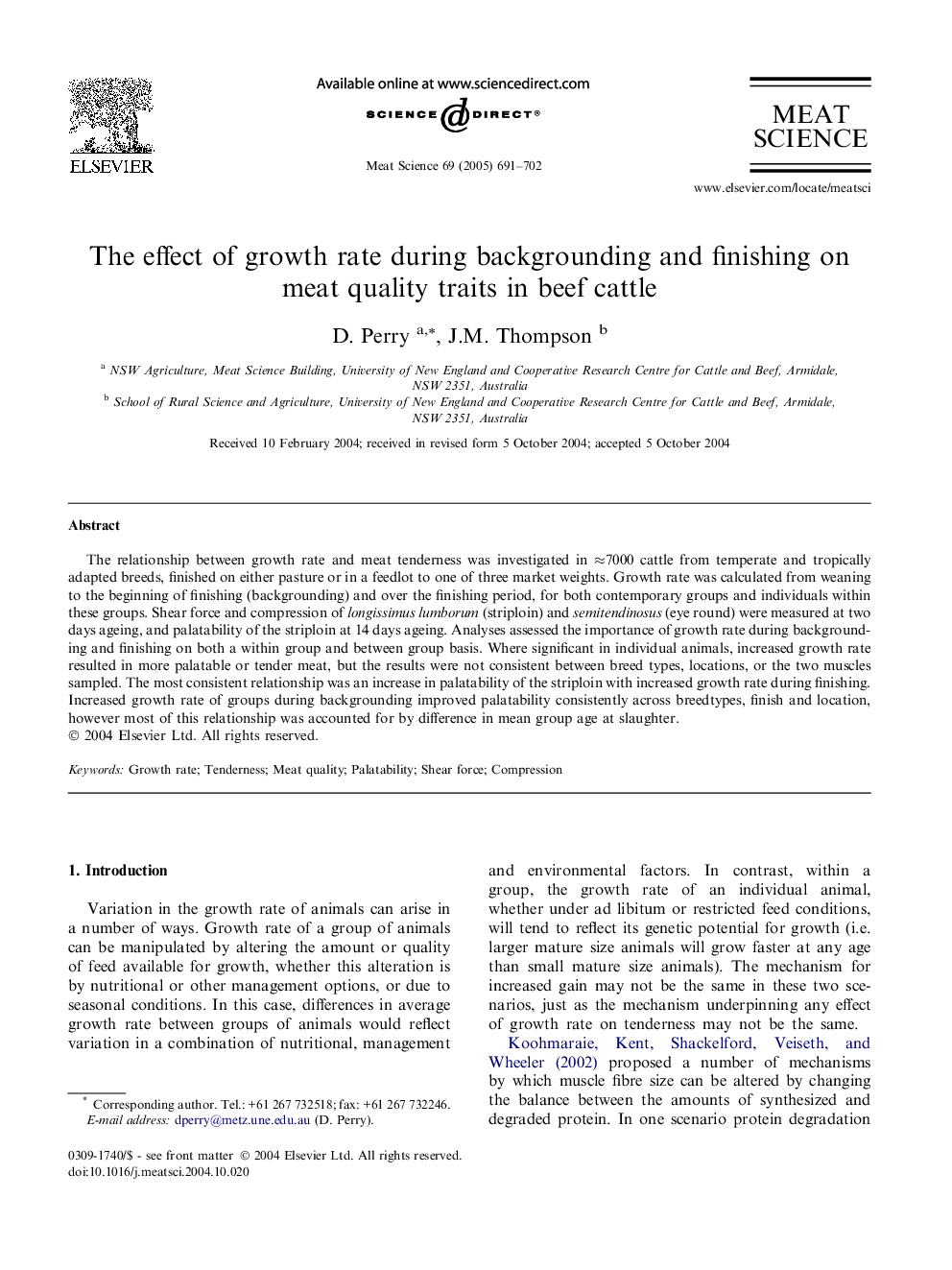| Article ID | Journal | Published Year | Pages | File Type |
|---|---|---|---|---|
| 8983781 | Meat Science | 2005 | 12 Pages |
Abstract
The relationship between growth rate and meat tenderness was investigated in â7000 cattle from temperate and tropically adapted breeds, finished on either pasture or in a feedlot to one of three market weights. Growth rate was calculated from weaning to the beginning of finishing (backgrounding) and over the finishing period, for both contemporary groups and individuals within these groups. Shear force and compression of longissimus lumborum (striploin) and semitendinosus (eye round) were measured at two days ageing, and palatability of the striploin at 14 days ageing. Analyses assessed the importance of growth rate during backgrounding and finishing on both a within group and between group basis. Where significant in individual animals, increased growth rate resulted in more palatable or tender meat, but the results were not consistent between breed types, locations, or the two muscles sampled. The most consistent relationship was an increase in palatability of the striploin with increased growth rate during finishing. Increased growth rate of groups during backgrounding improved palatability consistently across breedtypes, finish and location, however most of this relationship was accounted for by difference in mean group age at slaughter.
Related Topics
Life Sciences
Agricultural and Biological Sciences
Food Science
Authors
D. Perry, J.M. Thompson,
